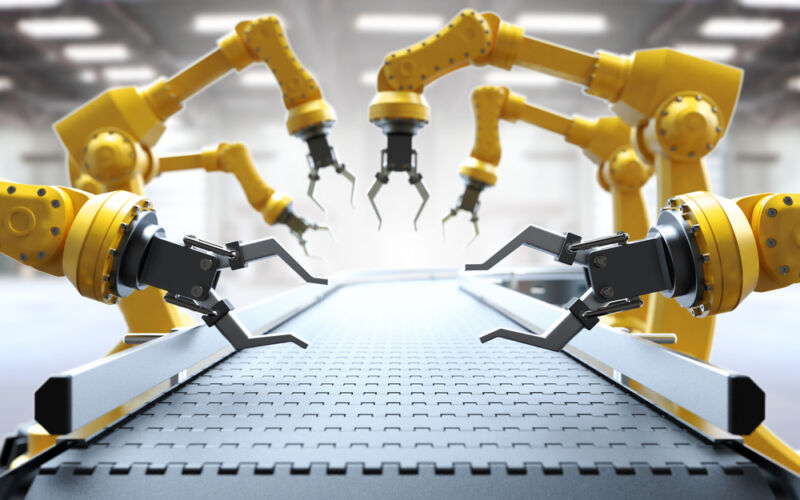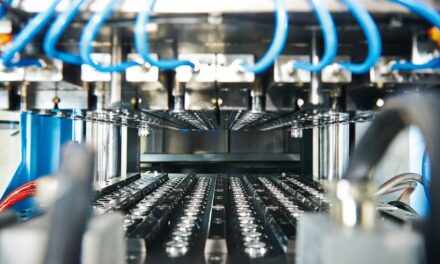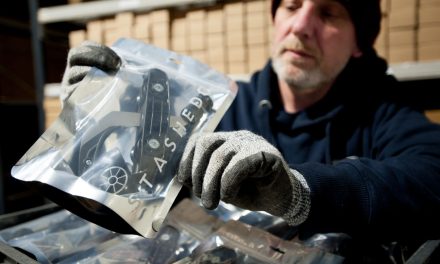Lights-out Ocado warehouses staffed by robots may appear a world away from the 20 person manufacturing company or family-run logistics operation, but that is no longer the case. Automation – including the use of autonomous mobile robots (AMR) – can play an important role in businesses of any size and it doesn’t have to come with a ridiculous price tag or disruption.
Adding just one or two robots to the business can reduce the amount of time operatives spend walking around the warehouse, or allow individuals to concentrate on added value activities such as quality checking. It can add contingency, helping a business manage the current staffing shortfalls. Plus with the ability to rent robots – including by the hour – companies have access to an affordable resource on demand.
As Dr Paul Rivers, CEO of Guidance Automation explains, automation is no longer just for the big boys – any manufacturing or logistics company can now seamlessly create a hybrid workforce that truly is fit for the future.
Automation Opportunity
Every manufacturing and logistics company is facing the same pressures, irrespective of size or longevity. Spiralling costs, supply chain disruption and a diminishing workforce are creating unprecedented challenges. For the larger businesses, the drive to automation is well established: in 2018, the global logistics automation market was valued at US$39.29 billion (£30.16 billion) and is expected to reach over US$121.3 billion (£93.11 billion) by 2027. And it is the demand for industrial robots that is driving much of that growth.
Too many smaller organisations, however, still believe that automation is simply an investment too far, especially when faced with so many escalating operational costs. On top of steeply increasing fuel and raw material costs, warehouses in Britain are paying up to 30% more to recruit staff, according to the UK Warehousing Association. As a result, few small businesses have the confidence to make a big capital investment, even if demand is increasing. But automation doesn’t have to be expensive – and it doesn’t even need to be a capital investment.
While a full, end to end automation project will demand time and commitment, one or two robots can be added to any warehouse or manufacturing business without the need for any disruption or even any custom IT integration. In one small scale trial, a warehouse opted to download orders onto a memory stick to provide the robot with a list of activities for the day. The robot works alongside existing employees, showing the business – and the workforce – just how easy and intuitive the automation process can be.
Accessible Robots
Obviously, automation comes in many shapes and sizes. Within a warehouse operation, organisations can explore different techniques to improve picking performance and accuracy – such as pick to light and voice-activated systems. Within manufacturing, conveyors and scanners can help to improve inventory management and improve productivity. So where do AMRs fit in? Essentially, an AMR is a vehicle that uses onboard sensors and processors to autonomously move materials without the need for physical guides or markers. The AMR’s main components include a controller, computing unit, battery, motors, sensors, lights, sounds and camera.
A simple trial of one or two AMRs is quick to deploy, and answers in practice the many pressing automation questions, such as ‘How do robots work alongside people?’, ‘Where can they be used?’ ‘How often do they need charging?’.
Workers quickly discover that robots travel at the same speed as a human walking. Lights flash when an AMR is about to move, and most have indicators to show if they are turning left or right at the end of the aisle – which is more than can be said for warehouse workers! While robots will typically operate for at least one full shift without needing to be charged, they are programmed to return to the charging station before they run out of power. They are also programmed to complete the current task before doing so, to avoid vital goods being stuck in the charging area, and will not start a new task without sufficient charge. More sophisticated programming can also use opportunistic charging – where the robot has a need to pause for short times during operations, therefore, adding a charger connection in this location allows the AMR to top up its power.
Robots in Practice
So where might an AMR work best? Essentially, robots can minimise the time spent walking around the building – something that is particularly valuable within a warehouse environment. Staff can spend more time picking, simply taking the goods to the robot at the end of the aisle. The robot can then take a number of items to the next location, such as packing. In a manufacturing setting, a robot could take the finished goods to the stores, or bring raw parts from stores – after they have been manually quality checked by a skilled employee.
This approach allows the business to make the best use of all resources. Use people in their areas of expertise, such as accurate, fast picking and quality checking; while using robots to complete repetitive tasks such as moving goods around the warehouse quickly and safely.
For an initial trial, there is no need for direct integration into the IT system. Information about what tasks to complete and when it can be provided by a small software link or a piece of hardware that identifies when an item is ready to be collected. It is a straightforward process to show the business – and employees – how and where automation and people can work side by side.
Low-Cost Automation
Obviously, the more a business automates, the greater the efficiencies gained. But even the smallest automation will deliver improvements. Adding a robot or two can allow a business to reallocate staff to more valuable areas and help to reduce the pressure on recruiting warehouse operatives.
With confidence in the technology and a real understanding of automation in practice, it is far easier for a business to consider where and when automation could fit. And for those companies still concerned about the level of investment, growing numbers of robots are now available on a rental model – even by the hour.
The concept of ‘robot as a service’ is hugely compelling for industries, such as logistics and manufacturing, where peaks and troughs in demand are hard to manage with a permanent workforce. With a couple of robots parked up, charged and ready to go, a business can be 100% in control of the cost, paying only for the hours used but with confidence that the capacity is available to cope with peaks in demand.
The key is to build that confidence, embark on a small scale trial and understand how AMRs work in any business, of any size, to create a successful, efficient hybrid workforce that can scale up and down in line with demand.




